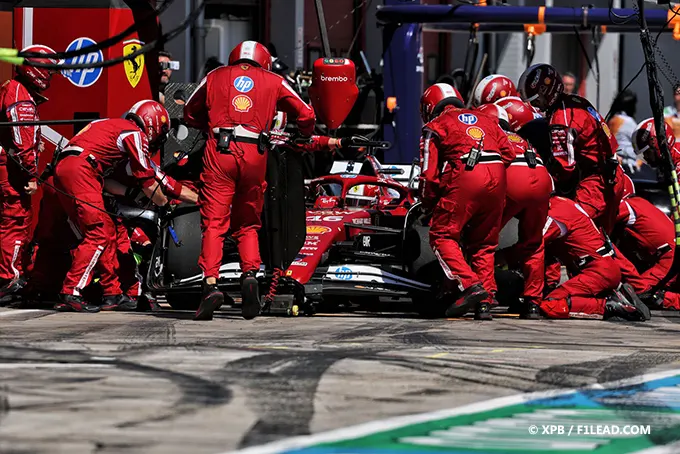Pirelli’s new C6 compound failed to deliver at Imola, sparking confusion and concern ahead of its Monaco return.
It was the major mystery, and the major disappointment, of the weekend at Imola. The ultra-soft C6 tires, brought to the circuit for the first time this year and intended to spice up strategy options, missed the mark entirely.
In the end, these tires were not as fast as expected over a single lap, due to severe degradation in the third sector and understeer. Adding insult to injury for Pirelli, George Russell and the Aston Martins set their best Q3 times on… the medium C5s.
Naturally, during the race at Imola, teams completely discarded the C6 compound.
So how can this misstep be explained, especially given that the C6 will return for the next Grand Prix in Monaco—a circuit thankfully less punishing than Imola’s high-speed corners?
Yet after free practice, Pirelli had been very confident about the C6, claiming it could be up to half a second faster per lap than the C5…
Mario Isola, Pirelli’s head of motorsport, admitted he remains puzzled to this day.
“I believe, and the general feedback from drivers is, that on Saturday they experienced more understeer compared to Friday, and that might explain why the C6 didn’t outperform the C5…”
“If you look at the lap times, they weren’t significantly faster than on Friday. The track didn’t evolve much, and with the understeer, they said it was hard to extract performance from the C6.”
“So, the C6 was probably more difficult to use—the warm-up lap was tricky. We can’t identify a clear pattern in the sector times to indicate degradation from sector one to sector three.”
Several teams also observed another surprising fact: they were able to get a better lap time out of a used C6.
“If we consider that this compound is very soft… as usual with a soft compound, there’s a grip curve with a slightly sharper or more unstable peak,” continued Mario Isola.
“So obviously, if you give the new tire a heat cycle, you get a slightly different grip curve [when the tire is already slightly used], and that makes it a bit easier to use a tire like this.”
How to explain the understeer encountered with the C6s? Could it be due to tire pressure? Pirelli had lowered the minimum rear tire pressure by 1 Psi before qualifying…
“It’s unclear why teams complained about increased understeer compared to Friday, because there’s no evidence to support it,” said Isola.
“We know that changing tire pressure by 1 Psi in either direction doesn’t really affect the balance…”
“We didn’t have any rain overnight or anything strange, but the track seemed slower compared to Friday—and in qualifying, everyone on average reported more understeer than on Friday.”
“On Friday, the limitation was at the rear; in qualifying, it seemed to shift more to the front.”
Given that the weather stayed consistent from Friday to Saturday, should the explanation lie in the fact that F1 cars run with less fuel and maximum speed and downforce in qualifying?
“There’s something more significant that we haven’t yet discovered that changed this balance,” concluded Isola.
One thing is certain, though: this questionable C6 is homologated for the season. The paddock will have to deal with it all the way to Abu Dhabi—starting with the next Grand Prix in Monaco!
- Discover More>Stella: Red Bull’s performance ‘somewhat surprised’ McLaren F1
- Follow us on >FACEBOOK and >TWITTERfor F1 update
